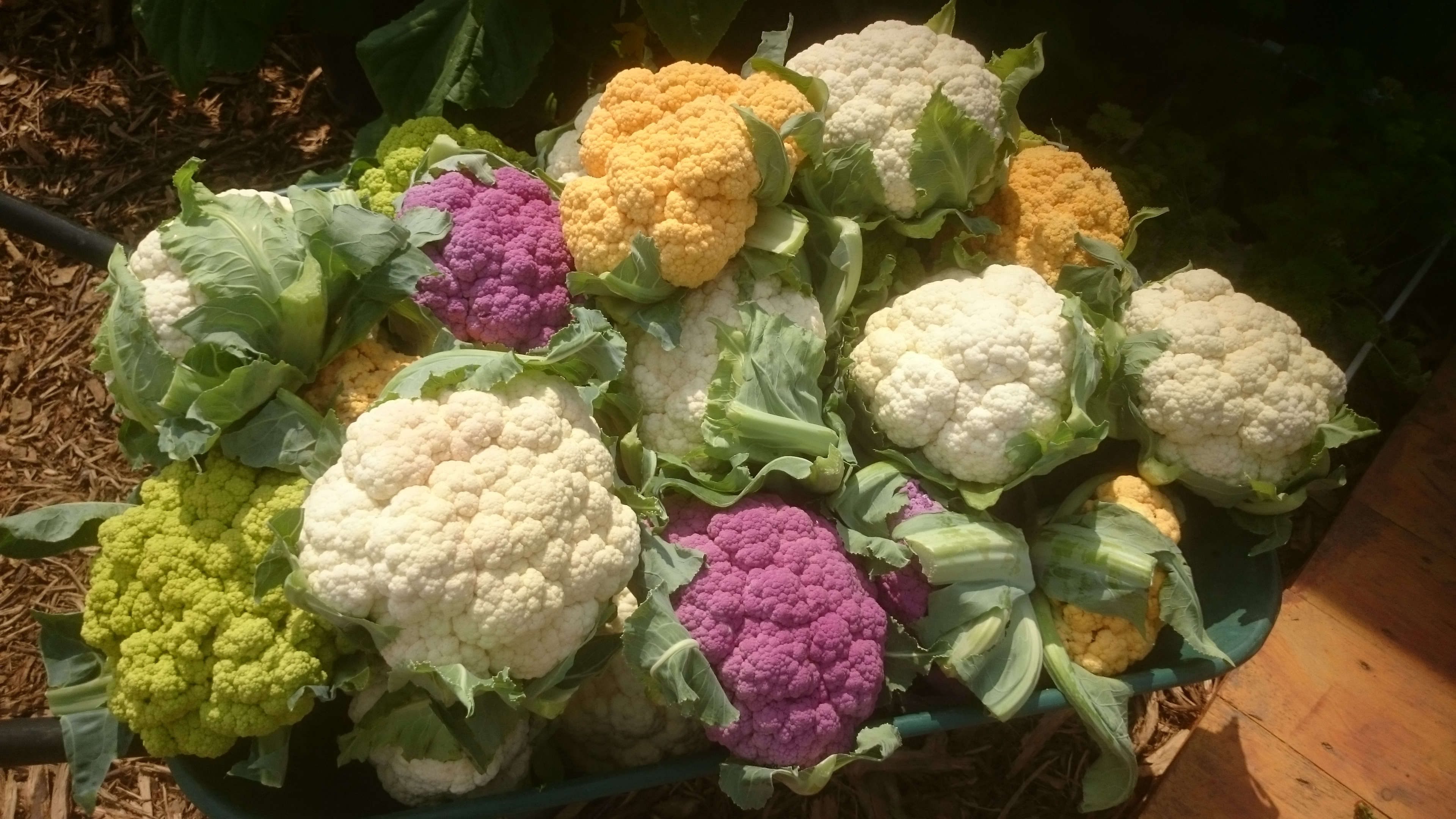Cauliflower (Brassica oleracea var. botrytis): “The Superstar Within”
Cauliflower reminds me of the nerdy beauty in movies. She rips off her glasses, shakes down her bun into long waves, and swaps paint-flecked overalls for a little black dress. It might take a bit longer to see it, but she has a superstar within. Case in point? The part of the cauliflower we eat, called the “curd,” is no flower at all but an elegant bunching of tiny, delicious stems. Cauliflower shines in pure white, bright purple, light orange and lime green hues, depending on the variety.
Above: Photograph by Erin Boyle.
Unlike other members of the Brassica genus, cauliflower needs gentle coddling to grow in a backyard setting. Plant in areas where temperatures will be cool, between 65 and 80, for most of the growing days. Prepare the bed with lots of compost to maintain consistent moisture. When the heads are about the size of a doorknob, be sure to tie the leaves together to blanch the head.
Above: Photograph by Dirk Ingo Franke via Wikimedia.
Cauliflower comes in several varieties, bred for different climates. Try a Romanesco variety for a many-pointed green head. With names like “Graffiti,” “Violet Queen” or “Cheddar,” purple and orange heads are also hard to resist.
Above: Photograph by Anil Simkhada via Wikimedia.
Cheat Sheet
-
- Interplanting cauliflower in flower beds, to provide a snap of sage-green foliage in early spring or fall.
- Natural garden companions for cauliflower include rosemary, nasturtiums, and fragrant herbs (to help growth).
- Cauliflower has gray-green foliage, with white, green, purple or orange heads.
Keep It Alive
- Cauliflower flourishes in full sun and depends on an even moisture supply to form heads. If you live in a hot place, consider planting in the shade of a pea or bean trellis.
- In cool-spring climates, grow cauliflower in spring or fall.
- Cauliflower can be grown as a winter crop in zones 8-10.
Above: Photograph by Michelle Slatalla.
“Cauliflower,” wrote Mark Twain, “is nothing but cabbage with a college education.” He wasn’t wrong, but I think the education has done her wonders. It’s not surprising that the creamy, sweet, nutty texture of cauliflower has caught on. You’ll find recipes for cauliflower steak, cauliflower fritters, roasted cauliflower, marinated and grilled cauliflower, and cauliflower rice. Serve with its glasses off.
Planning an edible garden? See our Plant Guide posts on Arugula, Parsley, and Tomatoes.
Finally, get more ideas on how to successfully plant, grow, and care for cauliflower with our Cauliflower: A Field Guide.
Interested in other edible plants for your garden? Get more ideas on how to plant, grow, and care for various edible plants (including flowers, herbs and vegetables) with our Edible Plants: A Field Guide.
















Have a Question or Comment About This Post?
Join the conversation (0)